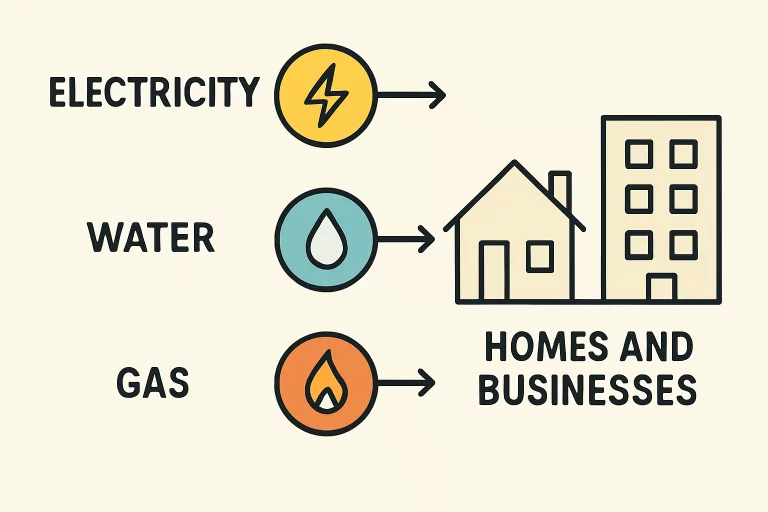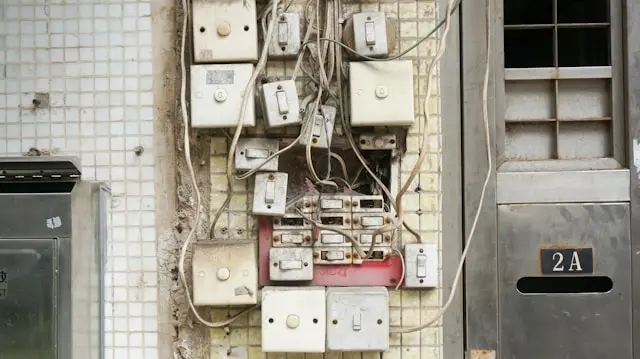Utility service providers are crucial in modern society, ensuring the uninterrupted flow of essential services like electricity, water, and gas. These services are essential for daily life, powering homes, driving economic activity, and supporting public health. They rely on skilled professionals and robust strategies to ensure resilience and adaptability. Professional utility services maximize efficiency, reduce downtime, and respond quickly to unforeseen problems. The complex operations require seamless coordination, advanced technology, and expertise. Understanding these sophisticated approaches highlights the importance of utilities and the infrastructure that keeps society functioning.
Proactive Maintenance Strategies
Utility providers must implement proactive maintenance strategies to prevent system failures before they disrupt service. These strategies involve regular inspections of vital components like power lines, transformers, substations, and water pipelines to detect signs of wear, corrosion, and electrical faults. Comprehensive testing and condition monitoring help anticipate emerging issues and resolve small defects before they escalate into major failures. Up-to-date records help providers analyze equipment history, identify recurring issues, and make data-driven decisions about infrastructure upgrades or replacements. Engaging professional utility services empowers providers to adopt industry best practices and deliver high-quality care to critical assets.
Leveraging Advanced Technologies
The integration of advanced technologies is shaping the future of utility management. Smart grid systems provide real-time visibility into electricity flows, enabling operators to automatically identify outages and reroute power. GIS allows utilities to create interactive digital maps, inventorying every asset across vast service territories. This allows field teams to locate problem areas quickly, coordinate responses, and expedite repairs during crises. Predictive analytics, leveraging big data and machine learning, forecast equipment failures or system stresses before they occur. This allows utilities to focus maintenance efforts on at-risk assets, improving reliability, reducing unnecessary expenses, and ensuring resources are used where they are needed most.
Emergency Preparedness and Response
Utility systems are vulnerable to various emergencies, including natural disasters and security threats. To ensure resilience, utilities prioritize comprehensive emergency preparedness. Response planning involves detailed blueprints outlining steps for various scenarios, including personnel roles, communication protocols, backup resources allocation, and leadership escalation rules. Infrastructure resilience is also crucial, with utilities proactively reinforcing transmission towers, installing automated switches, and deploying backup generators. Mutual aid agreements with neighboring utilities and public agencies facilitate resource sharing during crises. Partnerships with emergency management teams, first responders, and security advisors help organizations remain agile and coordinated. These strategies allow utilities to recover after disasters, quickly minimizing disruptions for their communities.
Enhancing Customer Communication
Utility companies are implementing omnichannel engagement strategies to maintain customer trust during disruptions. These include sending critical alerts through various channels, such as text messages, emails, and social media platforms. Interactive outage maps and mobile apps have also been launched, allowing customers to check real-time service status and report issues from their smartphones. This transparency not only empowers customers but also reduces call center workload. Utilities build strong relationships with their communities by prioritizing timely information sharing and encouraging mutual support, which is crucial during large-scale emergencies.
Investing in Workforce Training
Utilities must invest in continuous professional development to adapt to technological advancements and regulatory changes. Training programs should cover core technical skills, emerging disciplines like cybersecurity, data analytics, and customer service protocols. Safety training is crucial for managing high-risk environments and adhering to regulations. Utilities should encourage mentorship and knowledge-sharing to pass institutional expertise to recruits, ensuring operational excellence. Empowering employees to respond confidently to challenges and adopt new technologies enhances service delivery resilience, adaptiveness, and reliability.
Conclusion
Utility service providers play an essential role in keeping the fabric of modern society intact by ensuring that electricity, water, and gas are delivered safely and reliably, every hour of every day. Their success rests on a foundation of proactive maintenance, smart technology integration, comprehensive emergency readiness, open communication with customers, and a commitment to workforce training. Utilities that leverage professional utility services are best positioned to navigate ongoing challenges and deliver greater value to their communities, guaranteeing that our critical infrastructures remain robust, efficient, and resilient far into the future.




